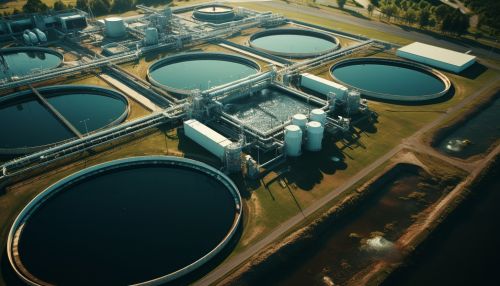Discussion on Water Resource Management
Introduction
Water resource management is the activity of planning, developing, distributing, and managing the optimum use of water resources. It is a sub-set of water cycle management. Water is an essential resource for all life on the planet. Of the water resources on Earth, only 2.5 percent is fresh water, and over two-thirds of this is tucked away in frozen glaciers or otherwise unavailable for our use. As time advances, water is becoming scarcer and having access to clean, safe, drinking water is limited among countries.


Water Resource Management Strategies
Effective management of water resources strives to ensure that future generations will have the necessary resources to survive and thrive. This includes the preservation of water quality, the conservation of water resources, and the efficient use of available water.
Water Conservation
Water conservation refers to the preservation, control, and management of water resources. Water conservation focuses on both the quantity and quality of water resources. It involves strategies and activities to manage fresh water as a sustainable resource to protect the water environment and to meet current and future human needs.
Water Quality Management
Water quality management involves the control of water pollution from various sources. It includes strategies and activities to prevent water pollution from industries, agriculture, and households. It also involves the treatment of wastewater to remove pollutants before they are discharged into water bodies.
Water Use Efficiency
Water use efficiency is the accomplishment of a function, task, process, or result with the least amount of water possible. In some cases, water use efficiency can be improved by technological innovations, such as more efficient irrigation systems for agriculture.
Challenges in Water Resource Management
Water resource management faces a number of challenges, including climate change, population growth, and infrastructure needs.
Climate Change
Climate change is expected to affect water resources through changes in temperature, precipitation, evapotranspiration, and the timing and magnitude of runoff. These changes could impact the availability of water resources for various uses and also affect the quality of water resources.
Population Growth
Population growth increases the demand for water resources. As the world's population continues to grow, the demand for water for various uses, including domestic use, irrigation, and industrial use, is expected to increase. This increased demand could lead to over-exploitation of water resources, leading to water scarcity.
Infrastructure Needs
There is a need for infrastructure to manage water resources effectively. This includes infrastructure for the collection, treatment, and distribution of water, as well as for the treatment and disposal of wastewater. However, many countries lack the necessary infrastructure to manage their water resources effectively.
Water Resource Management in Different Countries
Different countries have different strategies and policies for water resource management. These strategies and policies are influenced by various factors, including the availability of water resources, the demand for water, and the socio-economic and political contexts of the countries.
Water Resource Management in the United States
In the United States, water resource management is shared among federal, state, and local agencies. The federal government, through the U.S. Environmental Protection Agency, regulates water quality. State and local governments are responsible for managing water resources within their jurisdictions.
Water Resource Management in India
In India, water resource management is primarily the responsibility of the states. The central government provides guidance and technical assistance to the states but the responsibility for implementing and enforcing water resource management policies and regulations lies with the states.
Conclusion
Water resource management is a complex and challenging field. It involves balancing the competing demands for water from various sectors, preserving the quality of water resources, and ensuring the sustainability of water resources for future generations. Despite the challenges, effective water resource management is essential for the survival and well-being of humanity.
